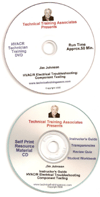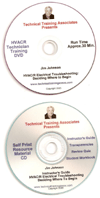“Line breaking, or the intentional opening of a closed piping system, can be tricky because piping systems can carry substances that are flammable, toxic, corrosive, scalding and/or under extreme pressure,” said Tom Skaggs, chairman of MCAA’s Safety and Health Committee and vice president – safety for the Murphy Company. “It’s smart to establish and follow the best safe work practices available, and this new safety training kit makes that easy.”
The Breaking the Line: Best Practices for Safe Line Breaking safety training kit reviews some of the more common safety issues involving line breaking, such as those that occur when lines are not completely drained, the wrong valves are closed, motor control centers are not locked out, valves are missed during lockout procedures, and residual pressure is still in the line.
“Failure to follow safe work practices can result in injuries to workers,” said Pete Chaney, MCAA director of safety and health. “Workers can be struck by flying objects; experience heat or chemical burns; inhale toxic gases, mists or vapors; incur skin conditions; and inadvertently start fires,” he said.
The training reviews these key areas of line breaking safety:
• Initial hazard identification;
• Walk-downs;
• Personal protective equipment;
• Lockout/tagout;
• Hazard warnings;
• Depressurizing and draining systems;
• Opening lines; and
• Other best safe work practices.
MCAA members and local affiliated associations received a free copy of Breaking the Line: Best Practices for Safe Line Breaking. Additional copies of the full safety training kit are available to members for $85. The kit is available to non-members for $255.
The safety training kit is available from MCAA’s Bookstore at www.mcaa.org/store, where contractors can also find the individual kit components as well as a variety of additional safety training kits and safety talks to assist with in-house worker safety training needs.
Publication date: 09/26/2011







